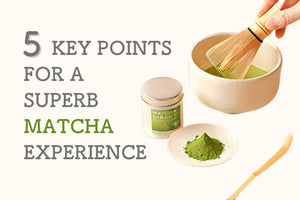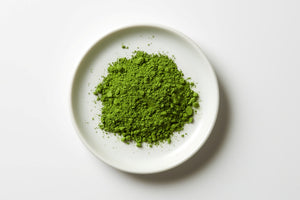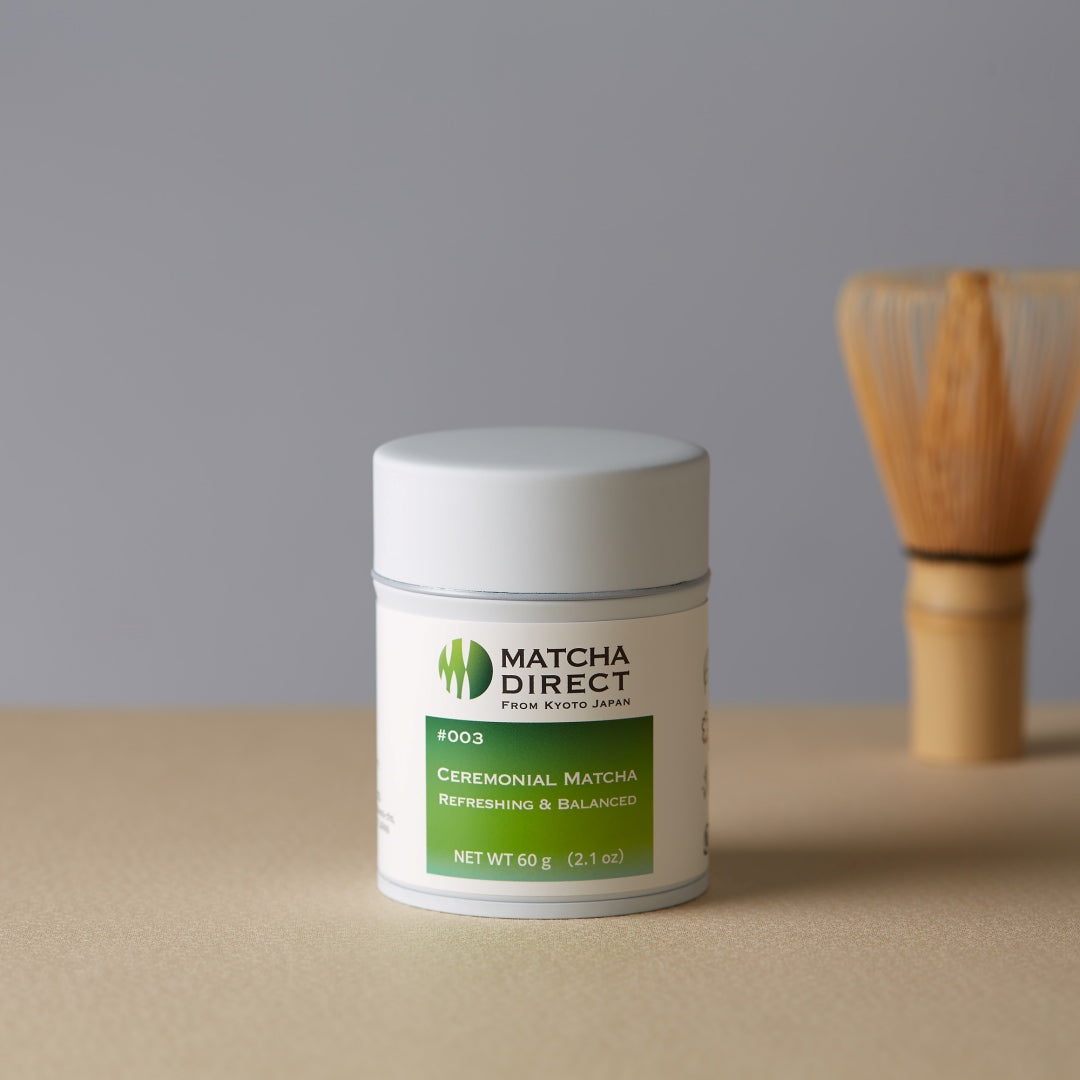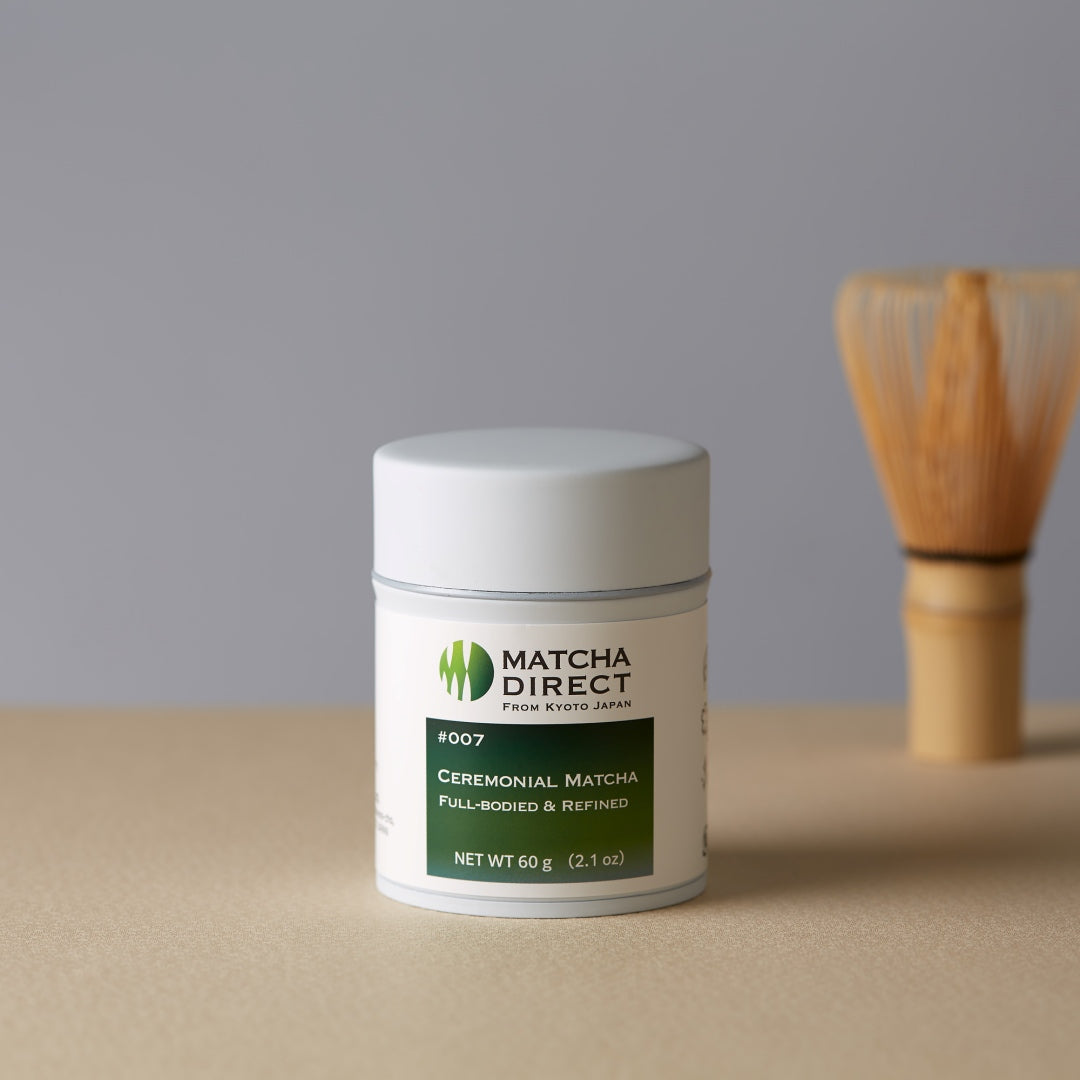What is matcha made of?

Matcha is a powdered green tea made from tea leaves cultivated by blocking sunlight. It is known as an expensive tea becuase it requires much work to produce it compared to other teas.
Matcha, with its unique flavor and vivid green color, represents traditional Japanese culture. However, its allure has gained popularity not only in Japan but also worldwide. You, reading this article, might be someone who has tried matcha or is a fan of matcha.
Do you know what matcha is made from?
As mentioned earlier, making matcha involves a great deal of effort. In this article, we will introduce Tencha which is the raw material of matcha,, its cultivation method, and the process until it becomes matcha.
The raw material for Matcha is 'Tencha'
Let's first talk about the raw material for matcha.
The raw material for making matcha is a special type of tea leaf called 'Tencha.' Although Tencha is a special leaf, the tea plant is the same as other teas, and there is no dedicated plant used specifically for Tencha. What differs are the cultivation and production methods.
While teas like Sencha are made from leaves exposed to sunlight, Tencha is made from leaves grown by blocking sunlight.
Many might think that, like vegetables, tea leaves would not grow tasty without sunlight. However, it is said that growing tea leaves without exposing them to sunlight increases their umami, and indeed, there are several teas made using leaves grown this way.
Examples include Gyokuro, Kabusecha, and matcha. Matcha made from leaves covered from sunlight contains a very high amount of umami components and has a unique aroma known as 'covering aroma.'
The tea leaves used to make Tencha for high-quality matcha are cultivated in various places, and Japan is famous for producing the highest quality matcha. Among the matcha produced in Japan, Uji matcha from Kyoto and Nishio matcha from Aichi are popular and are extensively exported overseas.
Tencha Cultivation Method
Let's explain more about the cultivation method of Tencha.
Unlike tea leaves grown fully exposed to the sun, Tencha, the leaves for matcha, are cultivated by blocking sunlight about 20 days before harvest.
The material most commonly used to cover the leaves is called 'Kanreisha,' a black fabric that can block up to 98% of sunlight.
This helps strengthen the chlorophyll, a green pigment, making the leaves develop into a vivid green color.
Additionally, blocking sunlight prevents the increase of catechins, which are astringent components, and promotes the production of theanine, said to have relaxing effects on the mind and body, making it easier for the flavor of sweetness and umami to develop.
Blocking the sunlight also helps to trap the aroma within the tea leaves, resulting in leaves that have the aforementioned 'covering aroma.'
This covering process becomes much work for tea farmers, making these leaves a valuable product of time and effort. This is one of the reasons why Gyokuro and matcha are expensive.

Matcha Production Method
We have introduced the cultivation method of Tencha, the raw material for matcha, but how is matcha made from this Tencha? Next, we will introduce the process from Tencha to matcha.
Harvesting
First is the harvesting of leaves that have been sufficiently covered.
The timing for picking the leaves is said to be before they grow too large, and for the highest quality first flush, or 'Ceremonial Grade Matcha,' harvesting begins at the end of April.
Tea picked as the first flush becomes the top-grade Ceremonial Grade Matcha used in tea ceremonies. Of course, matcha can also be made from leaves picked in the second flush or later.
(Link to matcha grades)
Generally, harvesting is done by machine, but some tea farmers still harvest by hand. When harvesting Tencha by hand, it is picked with a method called 'Kokidzumi,' which involves plucking with the fingers. This method, of course, requires skilled craftsmanship.
And matcha made from hand-picked Tencha tends to have a better flavor and is often considered a high-end product.

Steaming Operation
After harvesting, the leaves must be steamed within a few hours to prevent oxidation and preserve freshness.
If the harvested leaves are left as they are, they begin to ferment and oxidize immediately. Oxidation increases the astringency of the tea. However, there are methods where leaves are deliberately left to oxidize, resulting in black tea or oolong tea.
Matcha is produced without allowing oxidation, so humid air is used to steam the Tencha leaves and stop oxidation. This steaming operation not only prevents oxidation but also helps retain moisture in the leaves, preserves the vivid green color, and enhances the covering aroma.
Drying Operation
After steaming, the Tencha leaves are cooled and then moved to the drying stage.
Like Tencha, Gyokuro is another tea made from leaves covered from sunlight, but during the drying process for Gyokuro, the leaves are kneaded to shape them. The leaves are kneaded multiple times to form long, slender leaves.
In contrast, for Tencha, the leaves are not kneaded but spread out to dry while retaining their shape.
The dried leaves are then called 'Aracha' of Tencha. As there is no kneading involved, Tencha can be processed into Aracha more quickly than other teas. Additionally, not kneading the leaves allows more of the components contained in the leaves to remain in the Aracha.
Sorting Operation
The steamed and dried Aracha is further sorted.
Impurities such as the veins of the Aracha leaves, stems, dust, and other particles are removed, and the color and size of the leaves are standardized, leaving only the soft leaves (finished Tencha).
The finished Tencha is then finely cut, preparing it for the final step of grinding the leaves to make matcha. If this finished Tencha is stored in a cool, low-humidity environment like a refrigerator, it matures into a rich and mellow-flavored matcha.
Additionally, at this stage, blending with leaves from other regions may be done to adjust the flavor.
Grinding Matcha
The final step in making matcha is grinding the Tencha into a powder.
Recently, automatic machines have been used more frequently for grinding, but the traditional Japanese method of grinding Tencha involves using a stone mill. This method is time-consuming, and adjusting the stone mill requires highly skilled craftsmanship, but matcha ground with a stone mill results in a smooth, melt-in-your-mouth flavor.
However, because only a few dozen grams of matcha can be ground at a time with a stone mill, large-scale production is difficult, and the rarity of stone-ground matcha is quite high.
As you can see, there are many processes involved in making matcha. Matcha is truly a traditional Japanese craft, packed with the relentless efforts and skills of tea farmers.
Matcha from MATCHA DIRECT
At MATCHA DIRECT, we provide high-quality, stone-ground matcha crafted from Tencha produced in Uji area.
We grind the matcha individually after each order, allowing you to enjoy fresh, low-impurity matcha.
https://matchadirect.kyoto/products/ceremonial-grade-matcha
Summary
Matcha, made with great care, has a deep flavor and rich aroma, and it is also a profound part of Japanese traditional culture.
We hope that the information we introduced will deepen your understanding of matcha and serve as an opportunity for you to enjoy matcha even more.










